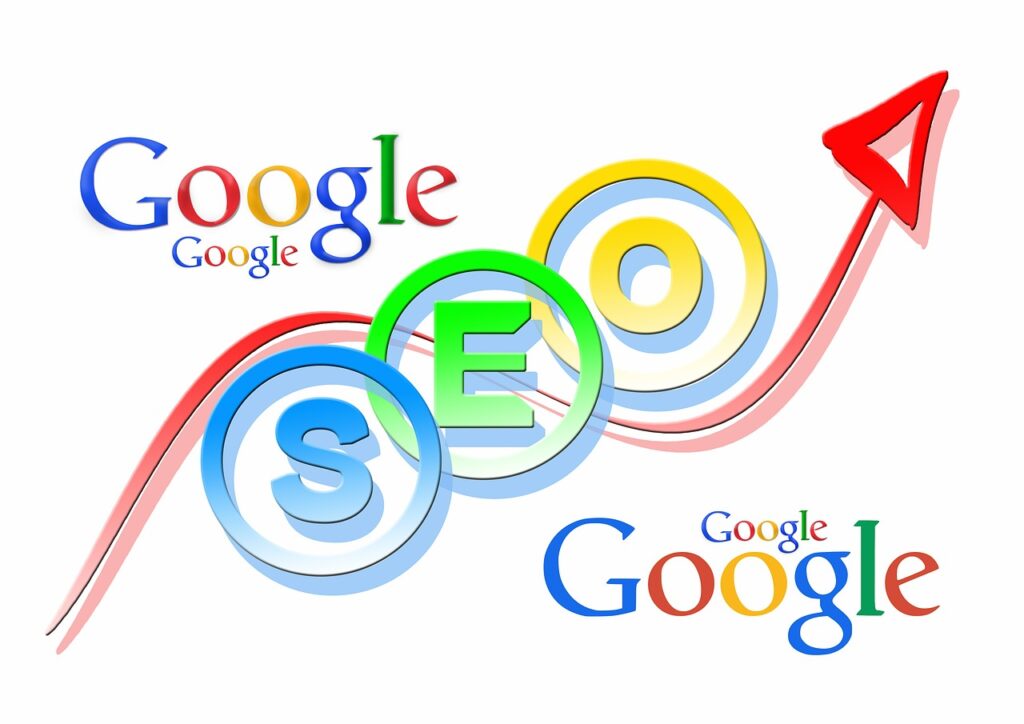Are you a beginner looking to unlock the secrets of E-commerce SEO? If so, this comprehensive guide is perfect for you. In this article, we will delve into the world of E-commerce SEO and provide you with all the essential information you need to optimize your online store. From keyword research and on-page optimization to link building and site structure, we’ve got you covered. So, let’s get started on the journey to improving your E-commerce SEO and driving more traffic to your website.
Understanding E-commerce SEO
E-commerce SEO refers to the practice of optimizing an e-commerce website to improve its visibility and organic search rankings on search engines like Google. This involves implementing various strategies and techniques to make your online store more search engine-friendly and increase its chances of appearing higher in search results. E-commerce SEO is crucial for online businesses as it helps drive more relevant traffic to their websites, increases brand visibility, and ultimately boosts sales and revenue.
What is E-commerce SEO?
E-commerce SEO is a subset of search engine optimization (SEO) that specifically focuses on optimizing online stores and their product pages for search engines. It involves optimizing various aspects of the website, such as keyword usage, on-page elements, technical elements, link building, content marketing, mobile optimization, conversion rate optimization, and analytics tracking. By using these techniques effectively, e-commerce businesses can attract more potential customers, increase their online presence, and drive more sales.

Why is E-commerce SEO important?
E-commerce SEO is essential for online businesses due to its numerous benefits. Firstly, it helps improve organic search visibility, ensuring that your products appear prominently in search results when potential customers are actively searching for them. This increased visibility can lead to higher click-through rates, more website traffic, and greater chances of making sales.
Secondly, e-commerce SEO helps build credibility and brand authority. When your website consistently appears on the first page of search results for relevant keywords, customers perceive your business as trustworthy and reliable. Being at the top of search results also allows your brand to establish itself as an industry leader, increasing brand awareness and customer trust.
Additionally, e-commerce SEO enables businesses to target specific keywords and reach their ideal customer base more effectively. By optimizing their website for relevant keywords, e-commerce businesses can attract highly targeted traffic that is more likely to convert into paying customers. This targeted approach can lead to better conversion rates and higher return on investment (ROI) compared to other marketing strategies.
Key elements of E-commerce SEO
To effectively implement e-commerce SEO strategies, there are several key elements to consider. These elements include keyword research, on-page optimization, technical SEO, link building and off-page optimization, content marketing, mobile optimization, conversion rate optimization (CRO), analytics and tracking, and continuous SEO improvement. Let’s explore each of these elements in more detail.

Keyword Research
Keyword research is the foundation of any successful e-commerce SEO strategy. It involves identifying the keywords and phrases that potential customers are using to search for products or services similar to yours. By targeting the right keywords, you can improve your website’s visibility for relevant searches and attract more qualified traffic.
There are several tools available to assist you in conducting keyword research. Popular tools include Google Keyword Planner, SEMrush, Moz Keyword Explorer, and Ahrefs. These tools provide valuable insights into search volume, competition, and related keywords, helping you make data-driven decisions when choosing your target keywords.
When selecting keywords for your e-commerce website, it’s important to consider relevance, search volume, and competition. Choose keywords that are highly relevant to your products or services but also have a reasonable search volume. Additionally, consider targeting long-tail keywords, which are longer and more specific phrases that often have lower competition. Long-tail keywords can help you attract highly targeted traffic and increase your chances of conversion.
On-Page Optimization
On-page optimization involves optimizing various elements on your e-commerce website to improve its visibility and relevance to search engines. It includes optimizing product pages, creating compelling product descriptions, improving website load speed, optimizing images and videos, and implementing structured data markup.
Optimizing product pages is crucial for e-commerce SEO. This involves using relevant keywords in the page title, meta description, and headers. It’s also important to have unique and descriptive product descriptions that highlight the key features and benefits of the product. Well-optimized product pages can help search engines understand the content of your pages and rank them higher in search results.
Improving website load speed is another important aspect of on-page optimization. A slow-loading website can negatively impact user experience and increase bounce rates. By optimizing your website’s load speed, you can enhance user experience and improve your website’s chances of appearing higher in search results.
Optimizing images and videos on your e-commerce website is also crucial for SEO. This involves using descriptive file names, adding alt text, and compressing images and videos to reduce file size. Optimized media files can enhance user experience and help search engines understand and rank your content better.
Implementing structured data markup is another on-page optimization technique that can improve your website’s visibility in search results. Structured data markup provides additional context to search engines about the content on your website, enabling them to display rich snippets in search results. Rich snippets can increase the visibility and click-through rates of your listings, ultimately driving more traffic to your e-commerce website.

Technical SEO
Technical SEO involves optimizing the technical aspects of your e-commerce website to improve its crawlability, indexability, and overall performance. It includes improving website crawlability, optimizing URL structure, implementing XML sitemaps, fixing duplicate content issues, and optimizing website navigation.
Improving website crawlability is crucial for search engines to effectively discover and index your website’s pages. This can be achieved by creating a clear and logical website structure, using internal linking to connect relevant pages, and making sure there are no broken links or 404 errors.
Optimizing URL structure is another important aspect of technical SEO. A well-structured URL that includes relevant keywords can improve search engine visibility and user experience. It’s recommended to use descriptive and user-friendly URLs that accurately reflect the content of the page.
Implementing XML sitemaps is essential for helping search engines understand the structure of your e-commerce website and index all relevant pages. XML sitemaps act as a roadmap for search engine bots, providing information on the organization and hierarchy of your website.
Fixing duplicate content issues is crucial for e-commerce websites that often have multiple pages with similar content, such as product variations or category pages. Duplicate content can confuse search engines and dilute the visibility of your pages. Implementing canonical tags or 301 redirects can help resolve duplicate content issues and ensure search engines understand which version of the page to index.
Optimizing website navigation is another important aspect of technical SEO. A clear and intuitive navigation structure helps users and search engines navigate your website easily. It’s recommended to have a logical hierarchy, descriptive navigation labels, and internal linking to connect relevant pages.
Link Building and Off-Page Optimization
Link building and off-page optimization involve acquiring high-quality backlinks from reputable websites and optimizing your online presence outside of your own website. This can help improve your website’s authority and visibility in search results.
Building high-quality backlinks is crucial for improving your website’s authority and search rankings. Focus on acquiring backlinks from trustworthy and relevant websites within your industry. You can do this through outreach, guest blogging, creating valuable content that others want to link to, and engaging with influencers in your niche.
Guest blogging is a popular strategy for acquiring backlinks and increasing brand exposure. By contributing high-quality content to reputable blogs and websites, you can showcase your expertise, attract new audiences, and earn valuable backlinks to your e-commerce website.
Social media marketing is another important aspect of off-page optimization for e-commerce SEO. By effectively utilizing social media platforms, you can expand your reach, engage with your target audience, and drive traffic to your e-commerce website. Share valuable content, interact with followers, and leverage social media advertising to maximize your online presence.
Monitoring your online reputation is crucial for maintaining a positive brand image and improving your search rankings. Respond promptly to customer reviews and feedback, address any negative comments or complaints professionally, and actively engage with your audience. Positive reviews and a strong online reputation can contribute to higher search rankings and increased trust in your brand.
Local SEO is particularly important for e-commerce businesses with physical stores or local target markets. By optimizing your website and online profiles for local search queries, you can attract customers in specific geographic areas. This can be achieved by including location-specific keywords, optimizing Google My Business listings, and acquiring local citations from relevant directories.

Content Marketing for E-commerce SEO
Content marketing is a crucial component of e-commerce SEO that involves creating and promoting valuable, informative, and engaging content to attract and retain your target audience. By providing relevant and useful content, you can increase website traffic, improve your search rankings, and build brand loyalty.
Creating engaging and shareable content is essential for attracting and retaining website visitors. This can include blog posts, articles, infographics, videos, and other formats that are relevant to your target audience. Focus on providing valuable and actionable information that helps solve their problems or addresses their needs.
Optimizing blog posts and articles for SEO is crucial for improving their visibility in search results. This involves using relevant keywords in titles, headings, meta descriptions, and throughout the content. Additionally, include internal and external links to provide context and add credibility to your content.
User-generated content (UGC) plays a vital role in e-commerce SEO. Encourage customers to leave reviews, ratings, and testimonials on your product pages. UGC provides social proof, builds trust, and can increase search visibility by enhancing the uniqueness and relevancy of your product pages.
Video marketing is becoming increasingly popular for e-commerce businesses. By creating informative and visually appealing videos, you can showcase your products, provide tutorials, and engage with your audience. Optimize your videos by using relevant keywords in titles, descriptions, and tags to improve their visibility in search results.
Optimizing content for voice search is becoming more important as voice assistants like Siri and Alexa become more prevalent. Consider how people commonly phrase questions and search queries when using voice search and incorporate those phrases into your content. Also, ensure your website is mobile-friendly, as voice search is often conducted on mobile devices.
Mobile Optimization for E-commerce
Mobile optimization is crucial for e-commerce websites as more and more consumers are using smartphones and tablets to shop online. By ensuring your website is mobile-friendly and optimized for mobile devices, you can improve user experience, increase conversions, and enhance your search visibility.
Mobile-friendly website design is the foundation of mobile optimization. Your website should be responsive, meaning it adapts to different screen sizes and orientations. This ensures that your website is easy to navigate, read, and interact with on mobile devices.
Accelerated Mobile Pages (AMP) is a technology that optimizes website pages for fast loading speeds on mobile devices. By implementing AMP on your e-commerce website, you can significantly improve website performance and provide a better user experience for mobile visitors.
Optimizing for voice search is essential for mobile optimization. As voice assistants become more popular, more people are using them to perform searches. By incorporating conversational phrases and long-tail keywords into your content, you can improve your chances of appearing in voice search results.
Mobile site speed optimization is crucial for mobile SEO. Slow-loading websites can frustrate visitors and lead to higher bounce rates. Optimize your website’s load speed by compressing images, minifying CSS and JavaScript code, and utilizing caching techniques.
Mobile user experience (UX) should be a top priority when optimizing for mobile devices. Ensure that your website is easy to navigate, has clear call-to-action buttons, and provides a seamless checkout process. By providing a positive user experience, you can increase conversions and customer satisfaction.

Conversion Rate Optimization (CRO)
Conversion rate optimization (CRO) involves improving your website’s ability to convert visitors into customers. By optimizing various elements of your e-commerce website, you can increase conversion rates and maximize revenue.
Importance of CRO for e-commerce cannot be overstated. Driving traffic to your website is important, but it’s equally crucial to ensure that visitors convert into paying customers. By optimizing your product pages, enhancing user experience, and optimizing calls-to-action, you can increase your website’s conversion rates.
Optimizing product pages for conversions involves creating compelling and persuasive product descriptions, using high-quality images and videos, and showcasing customer reviews and testimonials. Additionally, displaying clear pricing, providing easy access to product details, and implementing a user-friendly shopping cart can all contribute to higher conversion rates.
A/B testing is a valuable technique for identifying areas of improvement and optimizing your e-commerce website for better performance. By comparing different versions of a webpage or element, you can determine which version performs better and make data-driven decisions to improve conversion rates.
Reducing shopping cart abandonment is another important aspect of CRO. Many potential customers abandon their shopping carts before completing a purchase. By optimizing the checkout process, simplifying steps, offering guest checkout options, and providing clear and transparent shipping and return policies, you can minimize cart abandonment rates and increase conversions.
Creating effective calls-to-action (CTAs) is crucial for encouraging visitors to take the desired action. Whether it’s adding a product to the cart, subscribing to a newsletter, or completing a purchase, CTAs should be clear, visually appealing, and strategically placed. Use compelling language and design elements to entice visitors to take action.
Analytics and Tracking
Analytics and tracking tools provide valuable insights into the performance of your e-commerce website, allowing you to measure the effectiveness of your SEO efforts and make data-driven decisions. By analyzing key performance indicators (KPIs) and using tools like Google Analytics, you can optimize your e-commerce SEO strategy for better results.
Setting up e-commerce tracking in Google Analytics is crucial for monitoring the performance of your online store. It allows you to track important metrics such as website traffic, conversion rates, average order value, and revenue. By understanding these metrics, you can identify areas for improvement and optimize your website accordingly.
Analyzing KPIs is an essential part of e-commerce SEO. Key metrics to focus on include organic search traffic, conversion rates, average session duration, bounce rate, and exit rate. By regularly monitoring these metrics, you can identify trends, track the impact of your SEO efforts, and make data-driven decisions to improve your website’s performance.
Using Google Analytics for e-commerce provides valuable insights into customer behavior and preferences. You can track which products are driving the most revenue, which marketing channels are most effective, and which pages are performing well. This information can help you optimize your website, marketing strategies, and product offerings to maximize sales and revenue.
Tracking and optimizing conversion funnels is crucial for understanding the customer journey on your e-commerce website. By tracking how visitors navigate through your website and where they drop off, you can identify potential barriers or friction points that may be hindering conversions. Optimizing your conversion funnels can help streamline the user experience and increase conversion rates.
Utilizing heatmaps and user behavior data can provide valuable insights into how visitors interact with your website. Heatmaps show you where users are clicking, scrolling, and spending the most time on your website. This information can help you identify areas of improvement and optimize the layout and design of your website for better user experience.
Continuous SEO Improvement
Continuous improvement is crucial for maintaining a successful e-commerce SEO strategy. Search engine algorithms, consumer behaviors, and industry trends are constantly evolving. By monitoring and adjusting your SEO strategies, staying up-to-date with algorithm changes, utilizing data-driven decision making, evaluating and improving website user experience, and testing and iterating SEO tactics, you can stay ahead of the competition and maintain optimal search visibility.
Monitoring and adjusting SEO strategies is essential for staying on top of changes in search engine algorithms and consumer behavior. Regularly review your keyword strategy, on-page optimization techniques, link building efforts, content marketing strategy, and technical SEO practices to ensure they align with the latest best practices and industry trends.
Staying up-to-date with algorithm changes is crucial for maintaining search visibility. Major search engines like Google regularly update their algorithms, which can impact your website’s search rankings. Stay informed about algorithm updates and adapt your SEO strategies accordingly to ensure your website remains compliant and performs well in search results.
Utilizing data-driven decision making involves analyzing the data collected through analytics and tracking tools to inform your SEO strategies. Use quantitative and qualitative data to identify trends, measure the impact of your efforts, and make informed decisions. A data-driven approach can help you optimize your website, content, and marketing strategies for better results.
Evaluating and improving website user experience is essential for retaining customers and driving conversions. Regularly assess the usability, layout, and design of your website to ensure it aligns with user expectations and preferences. Conduct user testing, gather feedback, and make iterative improvements based on customer insights.
Testing and iterating SEO tactics involves experimenting with different strategies, monitoring their performance, and refining your approach based on the results. This can include A/B testing different elements of your website, trying new marketing channels, or experimenting with different content formats. By continuously testing and refining your SEO tactics, you can improve your website’s search visibility and drive better results.
In conclusion, understanding and implementing e-commerce SEO strategies is essential for the success of an online business. By focusing on keyword research, on-page optimization, technical SEO, link building, content marketing, mobile optimization, conversion rate optimization, analytics and tracking, and continuous improvement, you can improve your website’s visibility, attract more qualified traffic, and increase sales and revenue. Stay up-to-date with the latest SEO trends and best practices, monitor your website’s performance, and make data-driven decisions to optimize your e-commerce SEO strategy for long-term success.
